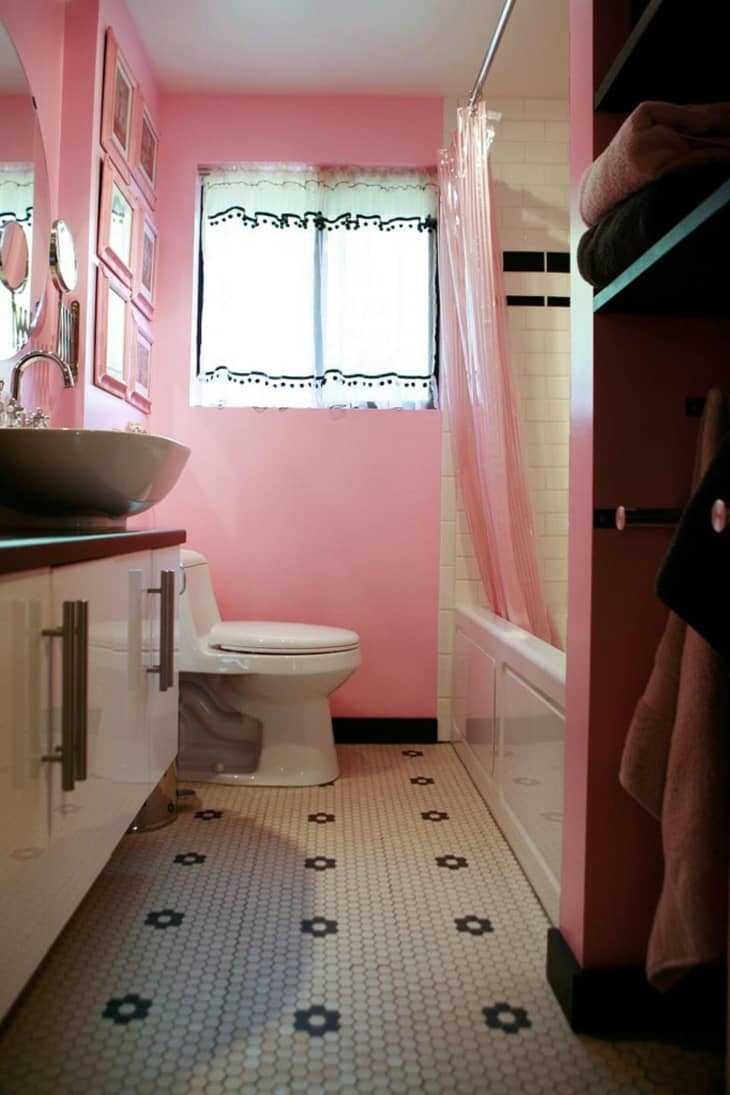The Delightful History of the Pink Bathroom
Is it just us, or does it feel like millennial pink will never lose its luster? Sure, the shade might’ve burst onto the design scene a few years ago, but it feels like we’re still seeing the punchy pigment everywhere . As far as we’re concerned, it’s showing no signs of slowing down.
But decades before millennial pink became the shade du jour , the color palette rose to power in another way: The pink bathroom.
All the rage for decades, pink-bathroom frenzy turned powder rooms into pastel pink confectionaries that captured the mood of post-war America. Tired of the khaki-hued drudgery of the war effort, Americans wanted to surround themselves with color. According to Pam Kueber of Retro Renovation and Save the Pink Bathrooms , approximately five million of the 20 million new homes built between 1946 and 1966 had a cotton candy pink bathroom.
Want to learn more? Keep reading for our comprehensive look at the history of pink bathrooms.

A Presidential Pink
Chartreuse, candy apple red, and bright turquoise were other optimistic colors that were in style, but the pink bathroom really took root when Mamie Eisenhower, President Dwight Eisenhower’s wife, moved into the White House. She loved pink so much that she decorated the White House’s private quarters with the hue, prompting the press to nickname 1600 Pennsylvania Avenue “ the pink palace .”
Brands capitalized on the trend and began to produce paint shades called “Mamie Pink” and “First Lady Pink.” While the First Lady loved the color, it didn’t have any particular associations with femininity at the time. Mamie was credited with making the link , turning the pale shade into a girly hue. Why the feminine fad? Mamie filled what we’d now consider a very traditionally feminine archetype. Some sample quotes from her: “I have a career. His name is Ike ,” and “Ike runs the country. I turn the pork chops!”
A Ladylike Look
After years of being breadwinners and war-machine factory workers, some women liked the idea of returning back to their traditional roles. Wanting to copy the First Lady, began redecorating their own bathrooms in floor-to-ceiling pink.
“Yes, bathrooms have gone colorful, in happy pastel shades, and although specific color choices are likely to change over the years, it’s pretty certain that the days of the dull, drab bathroom are definitely over,” The Times in Munster, Indiana, reported in 1955.
While contractors would use a range of pastel hues for the bathroom, pink was a homemaker’s favorite color, according to The Times.
A Sanitary Shade
Believe it or not, a pink-colored bathroom wasn’t just a pretty pop of color; it was surprisingly practical, too. Hilariously enough, the appealing bathrooms helped to increase hygiene in America.
“Making America’s bathrooms prettier seems to be causing Americans to bathe oftener,” The Ogden Standard-Examiner reported in 1957. “The once-a-week bath tradition has gone the way of the kerosene lamp.”
Think Pink
The Pepto-hued bathrooms began to slide out of favor in the ‘60s, when design tastes shifted. The Cold War was descending upon the country as the Space Race began to heat up, and it moved tastes towards more futuristic or sober aesthetics. Today, there is a resurging interest in the pink bathroom—thanks to the revival of mid-century design and millennials’ love affair with all things retro. An intact pink bathroom is now more of an intriguing design challenge than a renovation project, plus it’s a fun selling point for homeowners and renters alike.
If you really want to lean into its origins, take a cue from Mamie and pick up some pink cotton balls . She would be so proud.